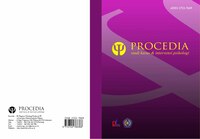Structural family therapy untuk memperbaiki interaksi dalam keluarga
DOI:
https://doi.org/10.22219/procedia.v9i3.16454Keywords:
Family interaction, patterns of communication, structural family therapy, regulation, members family roleAbstract
Problems in the family is the result of a reaction to the social interaction between family members. Bad communication and obscurity of interaction between family members leads to misunderstandings in family relationships. Structural Family Therapy used to improve the pattern of communication in the family. The subject consists of three members of the family. The data were obtained using interview and observation. The intervention was carried out in five sessions. The results of the intervention were each family member has a good pattern of communication, reduced misunderstandings, clear regulations and role in the interaction between them.
Downloads
References
Aponte, H. J. (1992). Training the person of the therapist in structural family therapy. Journal of Marital and Family Therapy, 18, 269-281.https://doi.org/10.1111/j.1752-0606.1992.tb00940.x
Connell, C. (2010). Multicultural perspectives and considerations within structural family therapy: the premises of structure, subsystems and boundaries. Insight: Rivier Academic Journal, 6(2), 1-6.
Cook, R. (2007). The golden thread that unifies effective treatments Review of the book Second order change in psychotherapy, by J. S. Fraser & A. D. Solvey. American Psychological Association, 12, 15.
Cooper, L. G., Gooding, J. S., Gallagher, J., Sternesky, L., Ledsky, R., & Berns, S. D. (2007). Impact of a family-centered care initiative on NICU care, staff and families. Journal of Perinatology: Official Journal of the California Perinatal Association, 27(Suppl 2), S32–S37.https://doi.org/10.1038/sj.jp.7211840
Friedman, M. M. (2010). Buku ajar keperawatan keluarga, Ed 5 tahun 2010. EGC.
Minuchin, S. (1974). Families and family therapy. Harvard University Press.
Minuchin, S. (1982). Reflections on boundaries. American
Journal of Orthopsychiatry, 52(4), 655–663.https://doi.org/10.1111/j.1939-0025.1982.tb01455.x
Simon, G. M. (1995). A revisionist rendering of structural familytherapy. Journal of Marital and Family Therapy, 21(1), 17–26.https://doi.org/10.1111/j.1752-0606.1995.tb00135.x
Szapocznik, J., Rio, A., Murray, E., Cohen, R., Scopetta, M., Rivas-Vazquez, A., Hervis, O., Posada, V., & Kurtines,W. (1989). Structural family versus psychodynamic child therapy for problematic Hispanic boys. Journal of Consulting and Clinical Psychology, 57(5), 571–78.https://doi.org/10.1037/0022-006X.57.5.571
Vetere, A. (2001). Structural Family Therapy. Child Psychology and Psychiatry Review, 6(3), 133-139.https://doi.org/10.1111/1475-3588.00336
Wetchler, J. L. (1995). A conservative response to Simon’s revision of structural family therapy. Journal of Marital and Family Therapy, 21(1), 27–31.https://doi.org/10.1111/j.1752-0606.1995.tb00136.x
Downloads
Published
How to Cite
Issue
Section
License
Copyright (c) 2021 Herliana Rahmi Saputri

This work is licensed under a Creative Commons Attribution-NonCommercial 4.0 International License.






